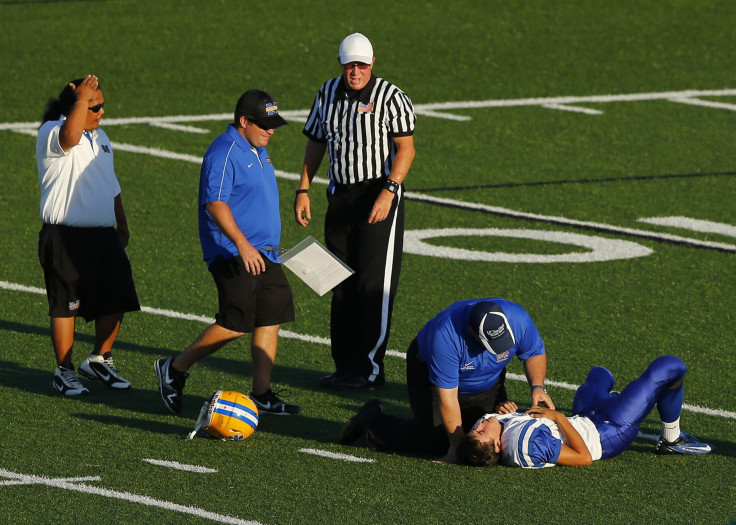Concussions Are Treatable, Experts Conclude At NFL-Sponsored Scientific Meeting

Concussions are a treatable injury, and athletes who suffer from them should no longer be relegated to dark rooms or restricted from schoolwork or social activities during their recovery. That’s the conclusion of an expert group of team physicians, neurosurgeons and sports medicine specialists following a two-day scientific meeting in Pittsburgh that was wholly sponsored by the National Football League.
"We had full agreement from 37 of the best minds in the field that concussion is treatable,” Dr. David Okonkwo, a neurosurgeon at the University of Pittsburgh Medical Center, said at a news conference following the event.
Critics have scolded the league in recent years for ignoring the severity of concussions suffered by its athletes and dodging research that suggests repeated hits to the head might heighten their risk of developing long-term brain damage. The NFL and UPMC jointly developed the idea for the meeting, and a representative of the league was there to observe.
The Pittsburgh group's consensus overturns a decades-old tradition of prescribing rest and restricted activities to concussed patients. Doctors have long thought that reducing stimulation of the brain as much as possible in the days and weeks following a concussion permitted the organ to recharge and repair chemical imbalances that are triggered when the injury occurs and give rise to symptoms such as blurred vision, memory loss and poor balance.
"We need to really change that conversation away from prescribed rest and toward active treatment of the condition,” Okonkwo said. “Prolonged rest actually worsens the recovery."
The researchers who convened at UPMC say putting patients through a menu of specific treatments designed to address their worst symptoms, such as eye exercises for patients with blurred vision, medicine for those who suffer headaches and physical therapy for anyone struggling with balance, will hasten recovery. They say treatment also will reduce the number of side effects such as anxiety and depression that patients suffer from as a result of avoiding favorite activities for weeks or months.
But the group acknowledged it still needs to work out many of the details regarding this new treatment paradigm and provide robust clinical evidence to demonstrate that it works. Researchers have yet to decide what the best treatments are for concussions of different types or how early those treatments should be administered.
"We know it's treatable because this is our life's work and we've all been doing this work for a long time,” Dr. Micky Collins, a neuropsychiatrist and director of the UPMC sports concussion treatment program, said. "We see kids get back to sports safely and effectively on a daily basis."
The group, which is calling itself TEAM, for Targeted Evaluation and Management of Concussion, has pledged to publish a paper outlining the discussion within the closed, invitation-only meeting in the journal Neurosurgery in the coming months.
However, Dr. Javier Cardenas, a neurologist from Barrow Concussion and Brain Injury Center at Arizona State University and a team physician with the Arizona Cardinals, also said it was important for experts who attended the meeting to “spread the word” to clinicians, patients and the public even before the finer points of treatment are further validated.
"There's a lot of concern about this injury and really a lot of misperceptions about this injury,” Collins said at the press conference.
The group met from Wednesday night through Friday afternoon at UPMC, which runs one of the largest sports concussion treatment programs in the country. Collins has pioneered and long advocated for a more aggressive treatment approach for concussions and set the guest list for the gathering with his UPMC colleagues.
© Copyright IBTimes 2024. All rights reserved.






















